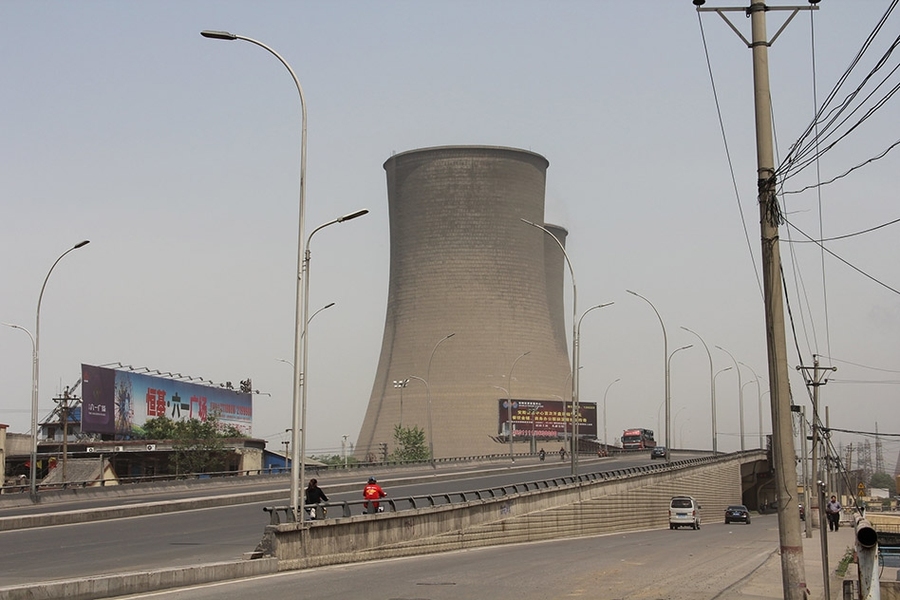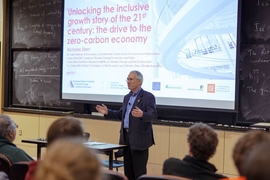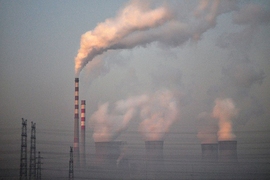Fulfilling the ultimate goal of the 2015 Paris Agreement on climate change — keeping global warming well below 2 degrees Celsius, if not 1.5 C — will be impossible without dramatic action from the world’s largest emitter of greenhouse gases, China. Toward that end, China began in 2017 developing an emissions trading scheme (ETS), a national carbon dioxide market designed to enable the country to meet its initial Paris pledge with the greatest efficiency and at the lowest possible cost. China’s pledge, or nationally determined contribution (NDC), is to reduce its CO2 intensity of gross domestic product (emissions produced per unit of economic activity) by 60 to 65 percent in 2030 relative to 2005, and to peak CO2 emissions around 2030.
When it’s rolled out, China’s carbon market will initially cover the electric power sector (which currently produces more than 3 billion tons of CO2) and likely set CO2 emissions intensity targets (e.g., grams of CO2 per kilowatt hour) to ensure that its short-term NDC is fulfilled. But to help the world achieve the long-term 2 C and 1.5 C Paris goals, China will need to continually decrease these targets over the course of the century.
A new study of China’s long-term power generation mix under the nation’s ETS projects that until 2065, renewable energy sources will likely expand to meet these targets; after that, carbon capture and storage (CCS) could be deployed to meet the more stringent targets that follow. Led by researchers at the MIT Joint Program on the Science and Policy of Global Change, the study appears in the journal Energy Economics.
“This research provides insight into the level of carbon prices and mix of generation technologies needed for China to meet different CO2 intensity targets for the electric power sector,” says Jennifer Morris, lead author of the study and a research scientist at the MIT Joint Program. ”We find that coal CCS has the potential to play an important role in the second half of the century, as part of a portfolio that also includes renewables and possibly nuclear power.”
To evaluate the impacts of multiple potential ETS pathways — different starting carbon prices and rates of increase — on the deployment of CCS technology, the researchers enhanced the MIT Economic Projection and Policy Analysis (EPPA) model to include the joint program’s latest assessments of the costs of low-carbon power generation technologies in China. Among the technologies included in the model are natural gas, nuclear, wind, solar, coal with CCS, and natural gas with CCS. Assuming that power generation prices are the same across the country for any given technology, the researchers identify different ETS pathways in which CCS could play a key role in lowering the emissions intensity of China’s power sector, particularly for targets consistent with achieving the long-term 2 C and 1.5 C Paris goals by 2100.
The study projects a two-stage transition — first to renewables, and then to coal CCS. The transition from renewables to CCS is driven by two factors. First, at higher levels of penetration, renewables incur increasing costs related to accommodating the intermittency challenges posed by wind and solar. This paves the way for coal CCS. Second, as experience with building and operating CCS technology is gained, CCS costs decrease, allowing the technology to be rapidly deployed at scale after 2065 and replace renewables as the primary power generation technology.
The study shows that carbon prices of $35-40 per ton of CO2 make CCS technologies coupled with coal-based generation cost-competitive against other modes of generation, and that carbon prices higher than $100 per ton of CO2 allow for a significant expansion of CCS.
“Our study is at the aggregate level of the country,” says Sergey Paltsev, deputy director of the joint program. “We recognize that the cost of electricity varies greatly from province to province in China, and hope to include interactions between provinces in our future modeling to provide deeper understanding of regional differences. At the same time, our current results provide useful insights to decision-makers in designing more substantial emissions mitigation pathways.”









